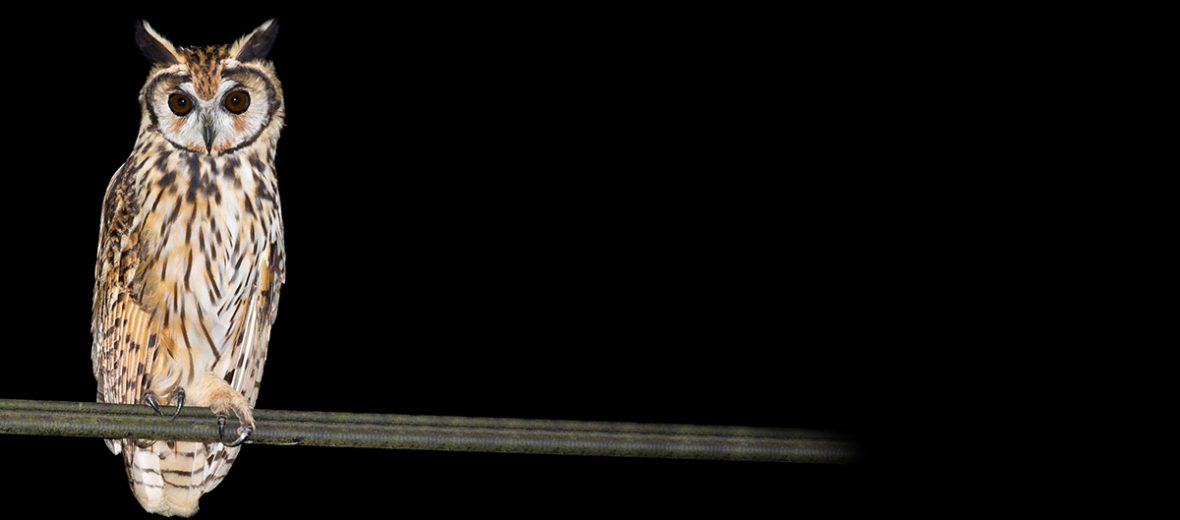
The striped owl can be found throughout Central and South America. They prefer marshes, riparian woodlands, savannas, open grassy regions, tropical rainforests, wooded suburban habitats, and agricultural lands. As mentioned, these owls are quite abundant, numbering an estimated 5,000,000 wild individuals. They also don’t face any real threats, sans natural habitat destruction and potential hunting. Due to these facts, they are listed as Least Concern by the IUCN. Their numbers are decreasing though.
First the Stats…
Scientific name: Asio clamator
Weight: Up to 1.2 lbs
Length: Up to 14.96 inches
Wingspan: Up to 11.57 inches
Lifespan: Up to 20 years
Now on to the Facts!
1.) These owls are vespertine (active during the early part of the evening) and nocturnal (active at night).
2.) Hunting for prey takes the form of flying low to the ground and dropping on prey, when it is spotted. They also look for prey while perched, in what I call perch and search.
3.) A group of owls is called a parliament or stare.
4.) Rats, mice, moles, gophers, insects, other birds, and reptiles are all on the menu.
5.) Their call is an elongated and loud “wheeyoo” sound. They also emit a “hoooooh” sound as well as “hu-how-how-how” barks.
But wait, there’s more on the striped owl!
6.) Under normal prey scarcity, these owls are monogamous (mate for life). In areas where prey items are abundant, males will take on multiple partners.
7.) Nests are typically built on the ground, in tall grass and under shrubs. But they can also be built in trees.
Did you know…?
Owls are sometimes separated into 2 groups: barn owls – those with heart-shaped faces, and typical owls – those with round faces.
8.) Females lay up to 4 eggs that hatch in up to 33 days.
9.) Typically, only 1 – 2 owlets survive long enough to fledge.
10.) Owls usually don’t drink standing water, as most of their moisture requirements are met from the food they eat.
But wait, there’s still more on the striped owl!
11.) Like all owls, their eyes are fixed in their sockets. Therefor, they have evolved the ability to rotate their head up to 270°!
12.) Just like in all owl species, they possess serrated flight feathers. This allows them to fly almost completely silent.
Now a Short Striped Owl Video!
Be sure to share & comment below! Also, check out the Critter Science YouTube channel. Videos added regularly!
Want to suggest a critter for me to write about? Let me know here.



